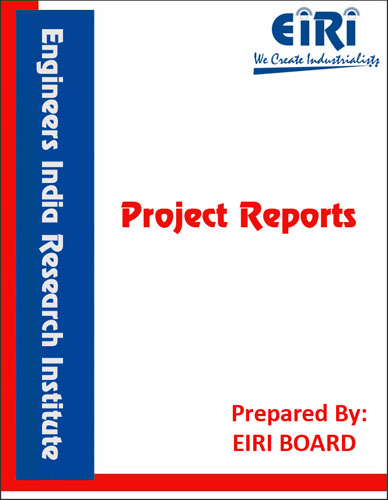The project report includes Present Market Position and Expected Future Demand, Market Size, Statistics, Trends, SWOT Analysis and Forecasts. Report provides a comprehensive analysis from industry covering detailed reporting and evaluates the position of the industry by providing insights to the SWOT analysis of the industry.
Glucose is a commercially import ant product widely used by the food and pharmaceutical industries. In general, glucose is used in the food industry as a partial or complete substitute for sucrose. Glucose is the common name for the syrup which is used in large quantities in fruit canning, confectioneries, jams, jellies, preserves, ice cream, bakery products, pharmaceuticals, beverages and alcoholic fermentation. The functional purpose of glucose in the confectionery industry is to prevent crystallization of the sucrose while in the bakery products industry it is to supply fermentable carbohydrates. In the icecream and fruitpreserves, it used to increase the solidswithout causing an undue increase in the total sweetness. In pharmaceutical industry, glucose is used as a precursor to make vitamin C in the Reichstein process, to make citric acid, gluconic acid, polylactic acid and sorbitol. Currently, glucose is utilized as an intermediate raw material for bioethanol production.
Commonly, glucose is prepared commercially via the enzymatic hydrolysis of starchinstead of acid hydrolysis. Many crops can be used as the source of the initial starch. Maize, rice, wheat, potato, cassava, arrowroot and sago are all used in various parts of the world.Nevertheless, using the starch needs to compete with their primary use as food crops. Due to the abundant of nonfood energy crops like cellulosic material, they are use to reduce the utilization of starch as raw material for production of glucose. Cellulosic materials including agricultural, agroindustrial and forestry lignocellulosic residues have potential as cheap and renewable feedstocks for large scale production of fuels and chemicals. Currently, bioprocessing of lignocellulosics is focused on enzymatic hydrolysis of the cellulose fraction to glucose, followed by fermentation to fuelgrade ethanol. However, enzymatic hydrolysis of cellulosic materials to produce fermentable sugars has also enormous potential in meeting global food and energy demand via biological route.
In lignocellulosic materials cellulose is physically associated with hemicellulose, and physically and chemically associated with lignin. The presence of these two fractions is reported to make the access of cellulase enzymes to cellulose difficult, thus reducing the efficiency of the hydrolysis. There are several kinds of pretreatment able to disrupt the lignocellulosic structure for increasing the efficiency of the hydrolysis which have been investigated but are not within the scope of this study. However, the effect of temperature and pH are also significant in cellulose hydrolysis which will be stud ying in this study. The temperature and pH influence the efficiency of cellulase to degrade the cellulose for
producing glucose.
In order to produce glucose, cellulose is essential to break it down first.By using acid hydrolysis, conversion of cellulose to glucose only produces low glucose concentration because acid is no selectivity. Furthermore, by using acid causes the cost production of glucose is highdue to demand of neutralization after hydrolysis which can contribute to corrosion problem if there is no neutralization process . Other that, the need of high temperature during acid hydrolysis process also contribute s to the cost of production because high energy is consume d. Waste from a cid hydrolysis also gives the bad effect to the environment which is using high concentration of acid can cause harmful to the environment. Therefore, the investigation attempted to determine the glucose production by using enzymatic hydrolysis process inorder to replace acid hydrolysis process.
Nevertheless by using enzymatic hydrolysis need highly specific and very sensitive. Their environmental condition such temperature and pH influence the activity of the enzymes in the system. Hence, the effect of temperature and pH is investigated to determine the maximum conditions of enzymatic hydrolysis process in glucose production.
INTRODUCTION
TYPES OF GLUCOSE SYRUP
PRODUCT DESCRIPTION AND USE
USES AND APPLICATION OF MALTODEXTRIN
PROPERTIES & CHARACTERISTICS
CHEMICAL COMPOSITION OF DIFFERENT KINDS OF RICE
PROPERTIES AND CHARACTERISTICS OF MALTODEXTRIN
B.I.S. SPECIFICATION
OVERVIEW AND AVAILABILITY OF RICE IN INDIA
MARKET SURVEY
IMPORT DATA OF LIQUID GLUCOSE
EXPORT DATA OF LIQUID GLUCOSE
PRODUCTION OF LIQUID GLUCOSE IN INDIA
MARKET SURVEY (GLOBAL)
PRESENT MANUFACTURERS
SPECIFICATIONS
COMMERCIAL PRODUCTION OF GLUCOSE
SEQUENCES IN GLUCOSE PREPARATION
MANUFACTURING PROCESS OF LIQUID GLUCOSE BY ACID HYDROLYSIS
PROCESS FLOW DIAGRAM
MANUFACTURING PROCESS FOR LIQUID GLUCOSE
PROCESS FLOW DIAGRAM OF LIQUID GLUCOSE
USING STARCH
MANUFACTURING PROCESS OF LIQUID GLUCOSE USING
ENZYME HYDROLYSIS
FILTERATION OF LIQUID GLUCOSE
PURIFICATION OF GLUCOSE SYRUPS USING ACTIVATED CARBON
PROCESS FLOW DIAGRAM
MANUFACTURING PROCESS OF RICE STARCH
MANUFACUTRING PROCESS OF MALTODEXTRIN FROM BROKEN RICE
PROCESS FLOW DIAGRAM OF MALTODEXTRIN FROM RICE STARCH
OBTAINED
FROM BROKEN RICE
TECHNICAL DETAILS AND OBTIMIZATION OF LIQUID
GLUCOSE AND MALTO DEXTRIN
SEPARATION OF PROTEINS AND PRODUCTION OF MALTODEXTRIN
ASSAY METHOD OF MALTO DEXTRIN (REDUCING SUGAR)
WET MILLING PROCESS
TECHNICAL PARAMETER IN LIQUID GLUCOSE PLANT
ENZYMES PROCUREMENT ANALYSIS DETAILS OF ALPHA
AMYLASE ENZYMES
MATERIAL SAFETY DATA SHEET FOR ALPHA AMYLASE ENZYMES
OVEVIEW OF ANIMAL FEED INDUSTRY
OPTIMIZATION OF BYPRODUCT OF THE PROCESS (GLUTEN)
RAW MATERIALS & YIELD
CONSULTANTS FOR GLUCOSE PLANT
SUPPLIERS OF RAW MATERIALS
SUPPLIERS OF BROKEN RICE
SUPPLIERS OF PLANT & MACHINERY (IMPORTED)
LIST OF THE BUYERS OF LIQUID GLUCOSE
APPENDIX – A :
1. COST OF PLANT ECONOMICS
2. LAND & BUILDING
3. PLANT AND MACHINERY
4. FIXED CAPITAL INVESTMENT
5. RAW MATERIAL
6. SALARY AND WAGES
7. UTILITIES AND OVERHEADS
8. TOTAL WORKING CAPITAL
9. COST OF PRODUCTION
10. PROFITABILITY ANALYSIS
11. BREAK EVEN POINT
12. RESOURCES OF FINANCE
13. INTEREST CHART
14. DEPRECIATION CHART
15. CASH FLOW STATEMENT
16. PROJECTED BALANCE SHEET



